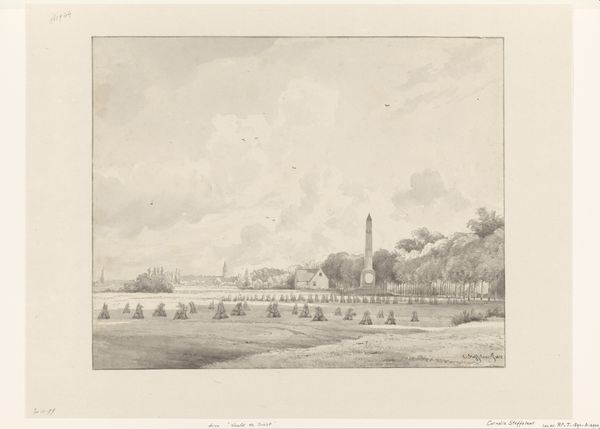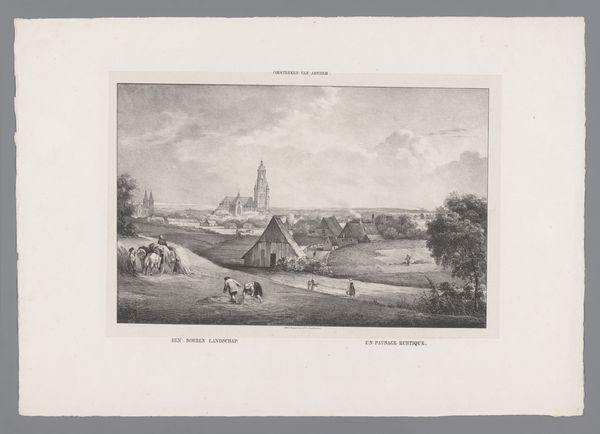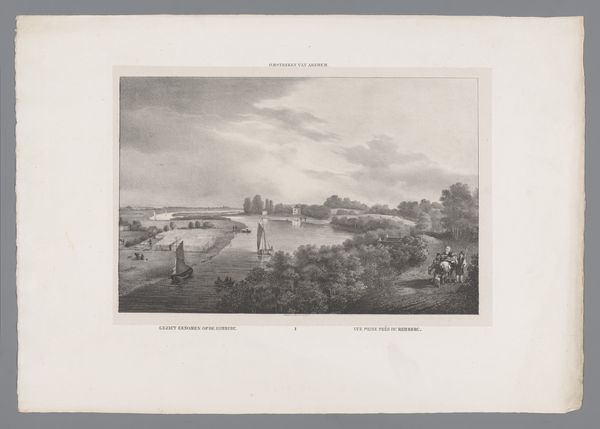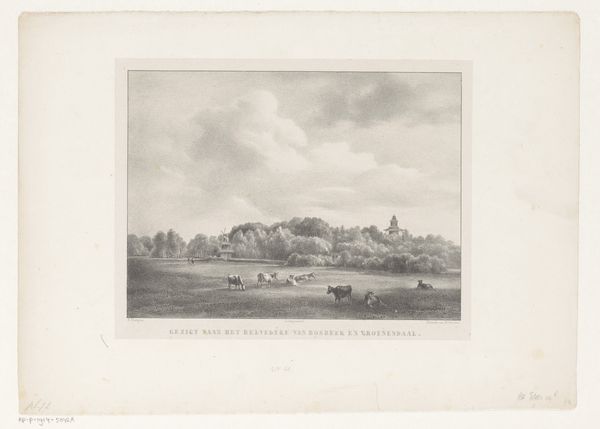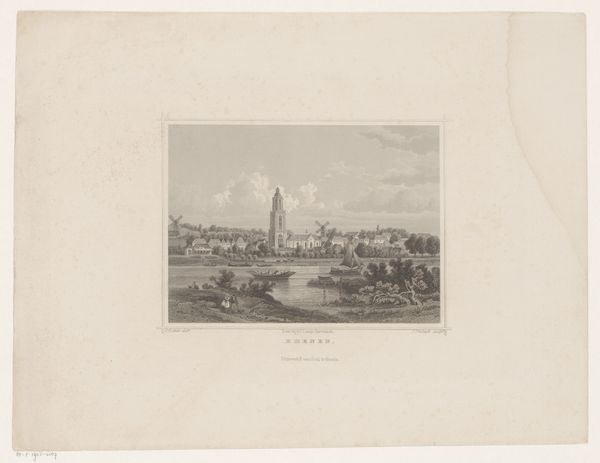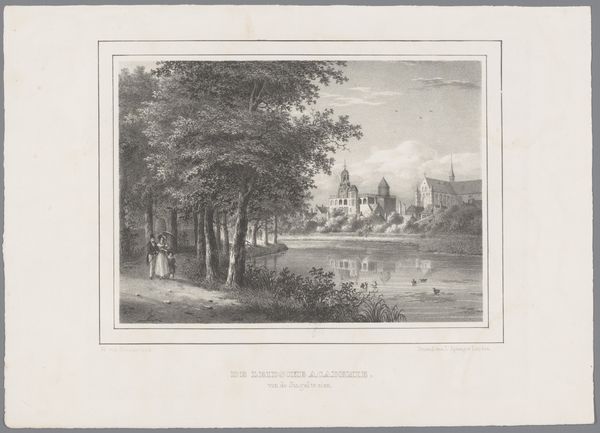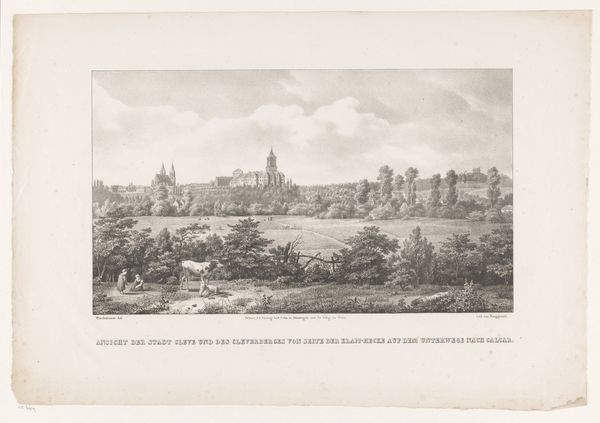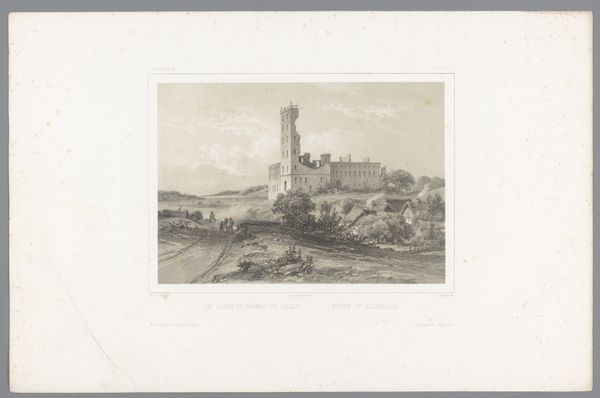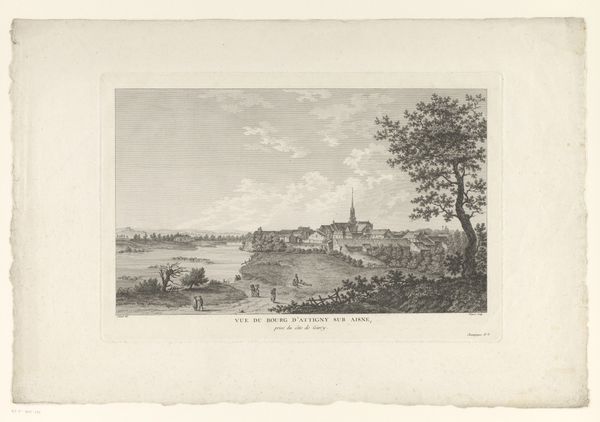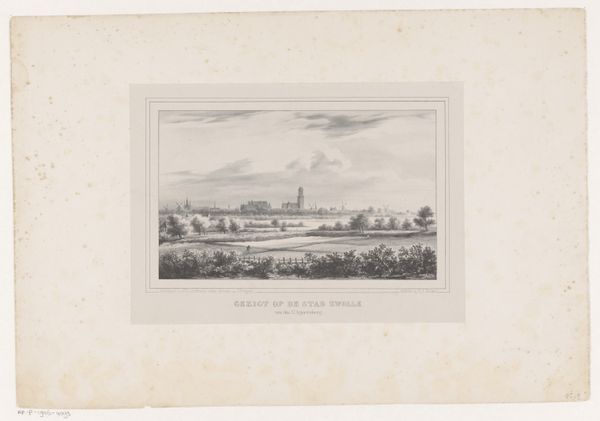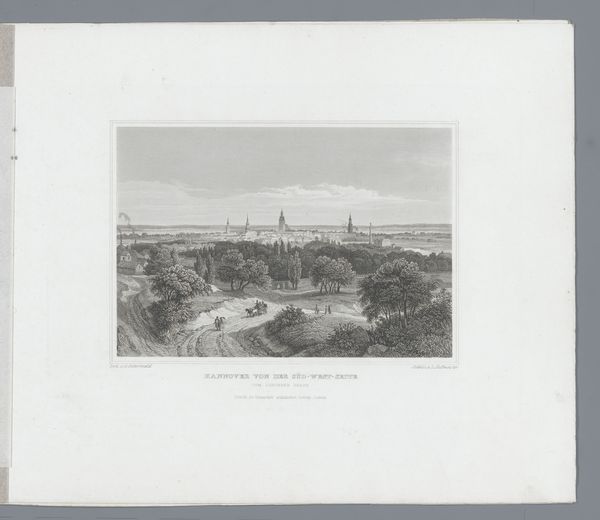
print, etching
#
narrative-art
#
dutch-golden-age
# print
#
etching
#
landscape
#
cityscape
#
realism
Dimensions: height 340 mm, width 485 mm
Copyright: Rijks Museum: Open Domain
Curator: What a peaceful, almost melancholic scene. It feels like looking back in time. Editor: Absolutely. And right in front of us, we have a print titled "View of the Rhine at Arnhem." This etching, of anonymous authorship, likely produced between 1827 and 1907, resides here at the Rijksmuseum. Look at all that intricate work with etching techniques. The plate must have taken such great skill! Curator: Etching, the controlled corrosion that brings forth this view. Do you see the soft light kissing the spire in the distance? It's as if the scene holds its breath, a fleeting moment captured eternally. And that quaint, almost blurry rendering. So, how do the lines themselves speak of a place undergoing such drastic material changes, eh? Editor: I'm curious about the choice of etching itself. Cheaper, and easier to reproduce than painting. And of course, a reminder of how industry can domesticate and control even nature; it's a statement about resources, labor, the material consumption embodied within that seemingly still landscape. I guess etching and print culture in general gave power back to people? Curator: Power perhaps. Although perhaps a nostalgic echo? Think how industry and burgeoning technology threatened the traditional agrarian, picturesque idyll. To look at it another way, imagine you're standing on that riverbank... the sounds of labor, water, the distant chime. Doesn't it make you wonder about the life of this anonymous artisan? The feelings etched into that printing plate! Editor: It definitely prompts those big questions. What did creation really mean to people from the past? This etching—its method, subject, its potential dissemination… each part gives me more insight into the economics of experience in art, even as we gaze so far removed. Curator: Perhaps, in the end, these prints can act like miniature time machines, revealing not just landscapes or structures, but something of a communal emotional consciousness… Editor: …Or perhaps it serves as a stark reminder: things always transform under capitalist forces, right? Even Arnhem has moved beyond windmills! Still a solid, informative print for historical archiving though.
Comments
No comments
Be the first to comment and join the conversation on the ultimate creative platform.
